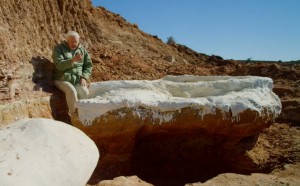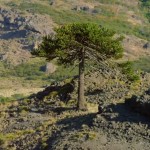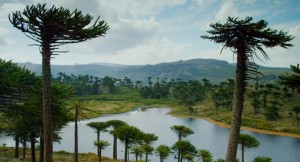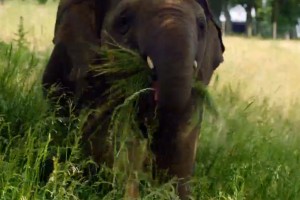Giant Heart
A giant animal like an elephant also needs a giant heart to power an ancient circulatory system to pump blood around its body. And so did our titanosaur.
Ancient Circulatory System
Its heart must have been immense. From our new, detailed knowledge of the skeleton, John Hutchison has calculated that it was more than six feet in circumference. It probably weighed 230 kilos and would have had to shift 90 litres of blood with a single beat. And it would have had to repeat that beat every five seconds.
Weighing more than three grown men, it would have been extraordinarily powerful. And in order to pump blood around the body at high pressure and then into the delicate lungs at a lower pressure, it’s thought that our titanosaur’s heart had four chambers – more like that of a bird than a reptile.
So, a powerful, giant heart pumped the blood to the extremities of the body, but how did the blood get back? As in an elephant, a combination of fatty footpads and tight skin are thought to have forced the blood from its legs… all the way back to its heart.
Up until now, the fossil bones have been the main focus of the dig but the rock that surrounds the fossils also holds important information. The nature of the layers of rock in which these fossils lie can tell us a great deal about how they got to be where they are and how old they are. Some of these layers are volcanic ash which must have come from a volcano erupting every now and then somewhere in the neighbourhood.
And this ash around the bones can tell us how old the fossils are. Scientists worked out that all of these fossils dated from the Cretaceous period but better than that, they dated them precisely to 101.6 million years old.

By a detailed forensic examination and comparisons with living creatures, the team have deduced a great deal deal about the life of our titanosaur.
We now know when it lived, how big it was, how it moved and what its young might have looked like. We’ve even calculated its giant heart rate.
In an investigation of this scale, sometimes the most important information comes not from the most eye-catching evidence but from quite tiny details.

Here is something that I really hoped the excavation was going to find. It’s a tooth. And it’s tiny compared with the size of the huge animals from which it came.
An Enormous Appetite
Teeth can tell you a huge amount about an animal. And if you look at the tip, you can see that it has been worn into two facets on either side. And that tells us that this tooth engaged with the other the teeth on the other side in an alternate way like that, not head-on but on either side. So this animal, like a pair of scissors, just nipped off the vegetation on which it was feeding.
Enormous though it was, just nipped off little leaves and here are the fossils of some of the different kinds of plant on which it might have fed… cycads, ferns and conifers.
One thing these plants have in common is that they’re all very fibrous and hard to digest. To get enough nutrients from such poor quality foods our titanosaur would have had to eat them in vast quantities.

A descendant of one of these plants still grows in Patagonia today. 200 million years ago when South America, Australia and Antractica were all joined together to form a supercontinent called Gondwana, a particular kind of vegetation was dominant – they were conifers. They continued to survive to 100 million years ago when our titanosaurs were roaming the land and a few still survive today.
Here on the foothills of the Andes is one of them. The monkey puzzle tree called araucaria. Trees like araucaria show that the dinosaurs must have had another problem. These conifer, apart from being poor-quality fodder, can grow to over 130 feet in height. They would have been out of reach for many animals but not our titanosaur.

It’s pretty clear why a long neck is useful for a land-living animal. It enables it to reach vegetation which is growing high up at the top of trees that other ground-based animals couldn’t reach and it must have been much the same for titanosaur, except we know from the fossils that titanosaur’s neck was very, very much longer.
And that enabled it to sweep its head in a great wide arc and even to reach between two tree trunks that happened to be growing close together to get other vegetation.
This enormous reach would have saved our titanosaur a lot of energy. It only needed to move its neck to feed, not its whole body.

But how did it eat enough of this poor-quality food to survive? Elephants face a similar challenge today. An elephant can collect and chew about 130 kilos – that’s 300 pounds of vegetation in a day. But our titanosaur could have eaten five times that amount.

It’s been estimated that a large titanosaur would eat enough plant material to fill a skip in a single day. So how did they digest it all? Elephants solve the problem by giving their food long preparatory chews but titanosaurs didn’t bother. They simply gathered leaves by nipping them off and then swallowing them whole. But that in turn would mean they needed a bigger and longer gut to digest all that unchewed food.
And it might well have taken ten days for food to pass through their digestive system. A bigger gut needs a bigger body so titanosaurs grew bigger and bigger until they approached the limits of what their bones could support.
